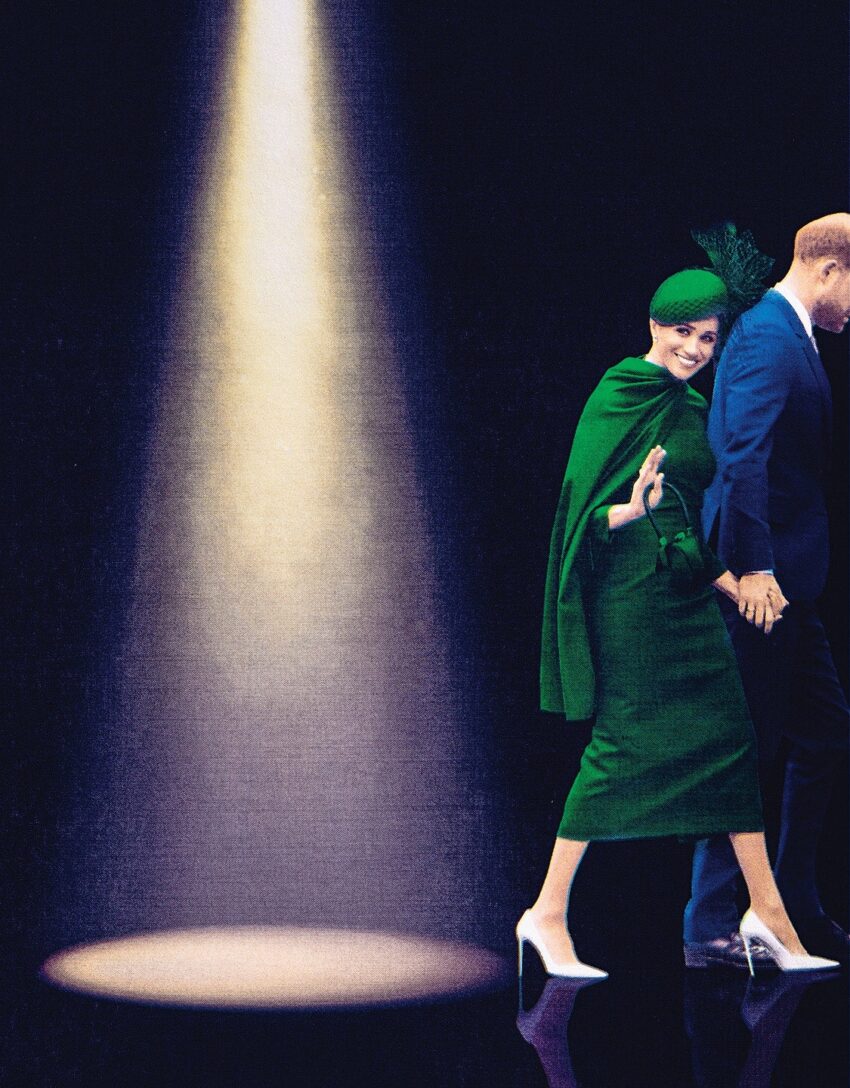In the realm of celebrity culture, the actions and decisions of public figures often undergo intense scrutiny and analysis from both the media and the general public.
A recent incident involving Meghan Markle during her visit to Nigeria has sparked a heated debate on the fine line between empathy and exploitation when it comes to interactions with vulnerable individuals.
The Duchess of Sussex found herself at the center of controversy when a photo opportunity with a young girl took an unexpected turn, leaving the child in tears.
This incident has ignited a passionate dialogue about the responsibilities of those in the public eye and the ethical considerations that come with it.
During her tour of Nigeria, Meghan Markle, renowned for her charitable endeavors and advocacy for women’s rights, had the chance to connect with locals and shed light on significant issues.
While visiting a local school, a photo session was arranged with a group of children to capture a heartwarming moment reflecting the Duchess’s commitment to making a positive difference.
However, things did not go according to plan.
As cameras clicked away, capturing the Duchess’s warm smile as she interacted with the children, one little girl in the group became visibly upset, shedding tears.
The image of the tearful child quickly spread across social media, sparking speculation and criticism.
The incident has raised pertinent questions about the obligations of public figures when engaging with vulnerable individuals, especially children, in their philanthropic pursuits.
Critics have voiced concerns that Meghan Markle should have displayed more sensitivity and awareness towards the emotional state of the child, suggesting that the photo opportunity was orchestrated purely for publicity.
They argued that by posing and smiling while the young girl cried, the Duchess exhibited a lack of empathy and exploited the child’s distress for personal gain.
Nonetheless, it is essential to consider alternative viewpoints.
Supporters of Meghan Markle defended her actions, asserting that the incident was an impromptu and unforeseeable reaction from the child.
They contended that the Duchess could not have anticipated the girl’s emotional response and that solely blaming her would be unjust.
Furthermore, they emphasized that such visits aim to draw attention to important causes, with photo opportunities serving as a vital tool to garner public interest and support.
The incident serves as a poignant reminder of the intricate dynamics surrounding public figures and their interactions with vulnerable individuals.
Celebrities often walk a tightrope between raising awareness for noble causes and safeguarding the emotional well-being of those they encounter.
Critics advocate for prioritizing empathy over publicity, urging public figures to carefully curate photo opportunities and public appearances to consider the emotional vulnerability of those involved, particularly children.
By doing so, celebrities can demonstrate genuine empathy while effectively advocating for the causes they champion.
Meghan Markle’s experience in Nigeria, where a young girl’s tears overshadowed a planned photo opportunity, underscores the challenges faced by public figures in their philanthropic endeavors.
While the incident sparked a heated debate on empathy and exploitation, it underscores the complexities inherent in such scenarios.
Balancing the promotion of awareness with the protection of vulnerable individuals’ emotional welfare necessitates thoughtful consideration and sensitivity.
As societal expectations of public figures like Meghan Markle evolve, engaging in meaningful conversations about the ethical implications of celebrity culture and its impact on those directly involved becomes crucial.
Through these dialogues, we can cultivate a more compassionate and empathetic society that prioritizes the well-being of all individuals, especially those thrust into the limelight of fame.
